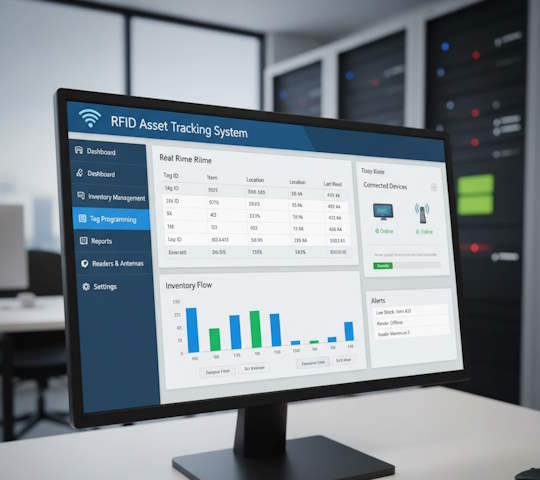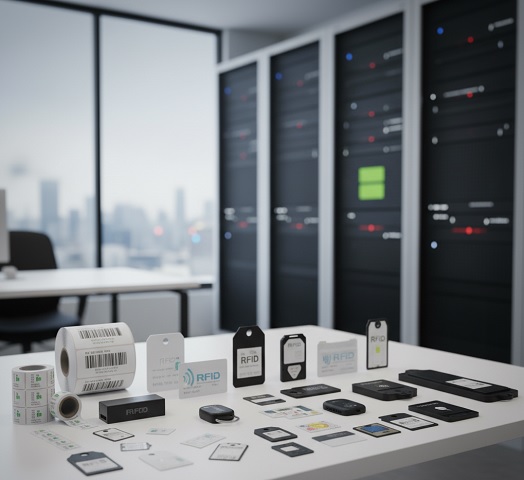RFID Tag Selection in Ukraine: Ensuring Maximum Efficiency and Optimal ROI
Introduction
The success of any RFID system implementation is 70% dependent on choosing the right tags. Errors in this stage can lead to a 40% drop in read accuracy and inflate the project budget by 2–3 times. According to the RAIN RFID Alliance, selecting the optimal tag achieves an identification accuracy of 99.9% and shortens the Return on Investment (ROI) period to as little as 12 months.
For Ukrainian companies, which must balance budgetary constraints with demanding local market requirements, a smart RFID tag selection strategy is key to successful digitalization and long-term efficiency.
Critical Factors in Choosing RFID Tags
1. Analysis of Operating Environment and Conditions
The environment dictates the required tag robustness:
-
Temperature Extremes: Metallurgy and energy sectors require high-temperature tags, such such as the Impinj Harsh Environment Series (operating from -50°C to +200°C).
-
Moisture and Chemical Exposure: Tags with IP68/IP69K protection from Zebra Technologies are necessary for aggressive conditions (food processing, heavy industry).
-
Mechanical Stress: Manufacturing and agriculture demand tags enclosed in durable PPS or ABS plastic casings for protection against impact and abrasion.
2. Accounting for Material Properties
The tagged material significantly affects tag performance:
3. Technical Parameters and Compliance
The operating frequency determines the application:
-
UHF (860–960 MHz): Logistics, warehouse inventory, transportation.
-
Standards: EPCglobal Gen2v2 (UHF), ISO/IEC 18000-63.
-
-
HF (13.56 MHz): Libraries, document management, payment systems.
-
Standard: ISO/IEC 15693.
-
-
LF (125–134 kHz): Access control, agriculture (animal identification).
Economic Justification and Practical Cases
Financial Metrics
-
Inventory cost reduction: up to 25–35%.
-
Average lifespan of quality tags: up to 10 years.
-
Reduction in replacement costs: up to 50%.
ROI Calculation Formula:
Implementation Case Studies
-
Logistics (Germany): Using Impinj Monza R6 chips resulted in 99.7% inventory accuracy and an ROI of 14 months.
-
Pharmaceuticals (Poland): Honeywell Healthcare tags automated expiration date control, leading to an 80% reduction in counterfeiting.
-
Ukrainian Agribusiness: Deploying anti-metal tags for tracking agricultural machinery led to a 60% increase in inventory accuracy.
Future Trends and Conclusion
-
RFID + IoT: Real-time environmental monitoring (temperature, humidity) integrated with asset data.
-
RFID + AI: Artificial intelligence optimizes tag placement and reader configuration.
-
RFID + Blockchain: Ensures anti-counterfeiting protection and an immutable transaction history.
Conclusion: Proper RFID tag selection is a strategic necessity, not just a technical detail. For Ukrainian businesses, it is crucial to combine international standards with a pragmatic consideration of local budgets and specific operating conditions to achieve rapid ROI and long-term operational success.
FAQ: Frequently Asked Questions
1. What type of RFID tags are best suited for metal assets in Ukrainian heavy industry?
The recommended choice is anti-metal tags featuring a ferrite layer. These tags ensure stable reading at a range of 2–4 meters, effectively neutralizing the signal interference caused by metal surfaces. For harsh environments, look for tags with a high ingress protection rating (e.g., IP68).
2. What is the typical cost for an RFID marking pilot project in Ukraine?
The cost can vary significantly based on scale, but an average budget for small-to-midsize Ukrainian enterprises generally ranges from $10,000 to $50,000. Key expenditures cover hardware (readers, antennas), necessary software integration, and the tags themselves.
3. Can standard UHF office tags be used for warehouse inventory tracking?
Yes, standard UHF tags are perfectly suitable for tracking items packed in cardboard or placed on wooden pallets, as these materials do not block the radio signal. They are the most cost-effective solution and can achieve a read range of 6-8 meters in open warehouse spaces.
4. What is the typical ROI period for an RFID project in the Ukrainian market?
The ROI (Return on Investment) for an RFID marking project in Ukraine typically occurs within 12 to 24 months. This rapid payback is driven by significant reductions in inventory errors, vastly accelerated inventory times, and minimized shrinkage/losses.
Sources




